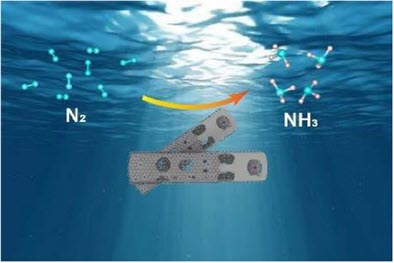Efficient charge separation and carrier transfer are critical determinants of the performance of photocatalysts for nitrogen reduction reactions (NRR) which are critical for agricultural and chemical industries. In this study, a novel type of heterostructure, termed an “In-Lattice heterojunction”, has been constructed by introducing a Fe─N4-anchored carbon layer (Fe─N─C) onto the surface of defective TiO2 (D-TiO2), as well as implanting it into the cavities of D-TiO2. The in-lattice heterojunction, defined as FNCTO, achieves efficient radial carrier transfer along the Ti─C─N─Fe in-lattice atomic channel and greatly promoted N2 adsorption benefiting photocatalytic NRR. Thus, FNCTO exhibits an excellent photocatalytic N2 reduct`ion into NH3 activity (88 μmol g?1 h?1), obviously higher than that of Fe─N─C sites on noncavity P25, illustrating the crucial role of cavity patch induced in-lattice heterojunction. This study paves a way for the development of high-performance Fe─N─C atomic photocatalysts based on noncarbon materials.

A novel “In-Lattice heterojunction” was constructed by patching cavities in defective TiO2 with Fe─N4-anchored carbon layer. It effectively catalyzes the nitrogen reduction reaction (NRR) and achieves an NH3 yield of 88 μmol g?1 h?1 by facilitating efficient radial carrier transfer and enhancing N2 adsorption.
Article link: https://onlinelibrary.wiley.com/doi/epdf/10.1002/anie.202509705





 Address
Address
 E-Mail
E-Mail
 Telephone
Telephone